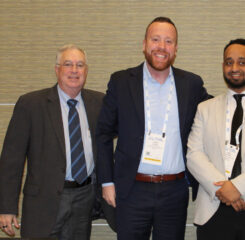The “Hospice Carve In” Demo Explained
Who can apply?
- Medicare Advantage Organizations (MAOs) can elect to participate in the hospice benefit component and in other components offered by the VBID model or to only participate the hospice benefit component of VBID (while meeting a few core criteria of the VBID model).
- MAOs are the applicants for the demonstration (hospices can participate as part of a plan network or as providers of other services but not as applicants to the demonstration).
- However, it is critical for hospice organizations to understand the model and what their opportunities are in order to judge whether they would want to participate as part of a plan’s network during this demonstration.
- There will be no geographic restrictions on the demonstration. The deadline for MAOs to apply for this demonstration is being extended to sometime in April 2020, we will update this article and other resources when CMMI provides updated information.
Is hospice “carved into” Medicare Advantage now?
- Hospice is only going to be a part of Medicare Advantage for the particular plan products that are participating in this demonstration. For example, in Miami, FL, the MAOs Humana and FloridaBlue offer multiple Medicare Advantage products. If either of these MAOs chose to participate in this demonstration, they will only choose certain plan products to be a part of the model. All other beneficiaries who have coverage from these MAOs will receive their hospice coverage via the rules as they work currently. LeadingAge members can utilize the “Step by Step Guide to Understanding Medicare Advantage Activity in Your Market” tol to look at MAOs and plans in their markets.
What are the model goals?
As described in the Request for Applications, released on December 19th, 2019, CMS is testing the impact on payment and service delivery of incorporating the Medicare Part A hospice benefit with the goal of creating a seamless care continuum in the Medicare Advantage (MA) program for Part A and Part B services. For MAOs that volunteer to be part of the Model, CMS will evaluate the impact on cost and quality of care for MA enrollees, including how the Model improves quality and timely access to the hospice benefit, and the enabling of innovation through fostering partnerships between MAOs and hospice providers.
Model Elements
Key Structural Elements
- Participating MAOs must offer the full scope of hospice benefits. Plans cannot “unbundle” the collection of benefits that a hospice provider must furnish including the use of interdisciplinary team and the four levels of care. Medicare-certified hospice providers must be used by MAOs to provide hospice services.
- CMMI is requiring that MAOs to have a strategy around the provision of palliative care services for beneficiaries with serious illness who either not eligible for hospice or who choose not yet to receive hospice services. MAOs may define the criteria that their plan participants must meet to receive these palliative care services. Palliative care providers can be hospice or non-hospice providers.
- CMMI is requiring that participating MAOs work with in-network hospice providers and non-hospice providers that make available transitional concurrent care services necessary to address continuing care needs for the treatment of hospice enrollee’s terminal conditions. The goal of this component of the model is to ease care transitions and ensure timely access to full benefits of hospice care.
Quality
- CMMI will monitor the following quality domains:
- documentation of goals of care;
- rates of hospice utilization shorter than 7 days and longer than 180 days;
- rates of pain control;
- family experience of care and perception of 24/7 access; and
- days at home during the last 6 months of life, a measure under development for use in this model as well as in the Primary Care First and the Direct Contracting models. LeadingAge nominated one of our members to the Technical Expert Panel that is providing input on the development of this measure and he was selected to serve on the panel.
Access
- Because hospices have to date not been part of the Medicare Advantage program. CMMI has created a “glide path” to ensure enrollee access to hospice care and enable network relationships to be built. in order to ensure access to hospice providers, for CY 2021 and 2022, all participating MAOs must cover hospice services furnished by both in-network and out-of-network providers. MA plans participating in the model are prohibited from using prior authorization or any utilization management process that interferes with timely access to hospice services. The model also includes provisions to ensure that participating MAOs pay their hospice care providers within timeframes established for all other providers. These measures are included to ensure that the model does not delay access to or payments for hospice care.
Payment
For the purposes of this demonstration, when a beneficiary elects hospice, an MAO will receive the following:
- A monthly hospice capitation rate for all the months that the beneficiary elects hospice including the initial month;
- Continued payment for the beneficiary’s prescription drugs (if it is a plan that offers a drug plan) and supplemental benefits.
- In Month 1, the MAOs continue to receive the basic benefit capitation rate (that covers A/B benefits) in addition to the hospice capitation rate and the payments for supplemental benefits and prescriptions. As a result of this and to discourage very short lengths of stay in hospice, the hospice capitation payment is tiered in Month 1 while it is flat from Month 2 on. More information on the development of the hospice capitation rate can be found here.
- In-network hospice providers will need to work with MAOs to determine what their payment structure looks like – the RFI contains some sample alternative payment structures in addition to the traditional Medicare FFS structure. Beneficiaries may not be charged higher cost-sharing than under Original Medicare. Non-contracted hospice providers must be paid 100% of Medicare FFS rates for CY 2021 and 2022.
Please see our Center for Managed Care Solutions and Innovation for a glossary of managed care terms and a Medicare Advantage 101 PowerPoint that includes an overview of Medicare Advantage payment.
If you are interested in this Model, reach out to local health plans to ask if they are considering participation! Please tune into the upcoming QuickCast to learn more about this model and reach out to Mollie Gurian at mgurian@LeadingAge.org with any questions.

Most Recommended
October 15, 2025
 Shutdown Week Three: Impact of Ongoing Closure on Affordable Housing
Shutdown Week Three: Impact of Ongoing Closure on Affordable Housing
December 10, 2025
Fiscal Year (FY) Funding 2026
October 07, 2025
Immigrant Workforce Matching Program Brings Workforce Relief
Recently Added
December 17, 2025
 Colleagues on the Move, December 17, 2025
Colleagues on the Move, December 17, 2025
December 16, 2025



